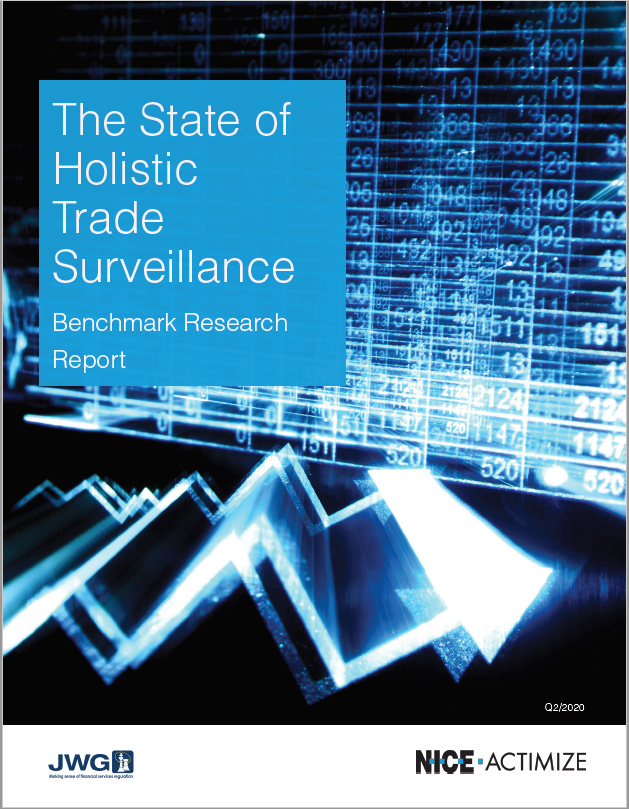By PJ Di Giammarino
Over the past few years, financial services firms have been investigating how to improve trade-related surveillance capabilities and techniques. Expectations from regulators and senior management have been placed under the microscope, mainly due to high surveillance noise levels across all communication channels and asset classes.
In tracking this evolution of technologies to meet these demands, JWG and NICE Actimize collaborated on the benchmark research study presented in a new Benchmark Research Report. The research explores an evolution of trade-related surveillance – starting at ‘Random’ and evolving to ‘Siloed,’ ‘Integrated’ and ultimately Holistic. The findings in this benchmark survey give the industry a way to evaluate their current state and target capabilities.
We have found that few firms are satisfied with the status quo and are investing in:
- Efficiency: Reducing manual work is still the number one priority
- Integration: Establishing a focus on bringing together siloed processes, data and systems
- Operating model: Redefining key components of the operating model
- New technology: Establishing and integrating AI and machine learning foundations.
We have drawn the following key conclusions from the survey data:
- Surveillance capabilities are still relatively immature today
- Half of the firms which indicate that they are still operating in siloes would like to operate with an integrated methodology inside of the next 18 months
- 67% of ‘integrated’ firms indicate that they are currently struggling with manually intensive processes for data management
- 90% of ‘integrated’ firms state that they will continue to focus on being more integrated
- 13% of ‘holistic’ firms are still reliant on manual processes to manage lexicons. None of them could indicate that they have fully integrated ontologies to contextualize information.
However, with new technologies and regulatory developments on the horizon, these finding could shift significantly in the next 18 months. Key drivers of this shift will likely be:
- New compliance drivers like senior management accountability (e.g., SM&CR)
- Clarification from regulators on their technology expectations
- AI and ML techniques deployed for business growth which are leveraged for surveillance.
Additionally, more collaboration between firms, their suppliers and regulators is still required in order to define the appropriate reference technologies that will characterize a ‘good digitized surveillance system’ in 2030.
JWG’s Trade Surveillance Special Interest Group (TSS) is ramping up efforts to help. Our growing surveillance community has been busy looking at a patchwork of regulatory obligations over the last two years. We ran workshops on new imperatives for Conduct, AML and data ethics in the second half of 2019 – all while completing this extensive research.
Our next meeting will cover new papers from the UK and Europe which also form part of that patchwork. The new ICO Draft Guidance on AI Auditing, the European Commission Trust in AI paper also published last quarter will be discussed. In addition, the implications of the FCA’s second set of essays, DP 20/1: Transforming culture in FS will be reviewed.
This review will help us continue to frame the need for SM&CR wholesale guidance which we discussed last month. If you would like to attend TSS 18: SM&CR Guidance for Wholesale Surveillance of Markets, AI and Culture on 23 April 16:00-17:30 please contact Corrina.Stokes@jwg-it.eu.
For a free copy of the paper, click here:
https://info.nice.com/JWG-Benchmark-Research-Report


